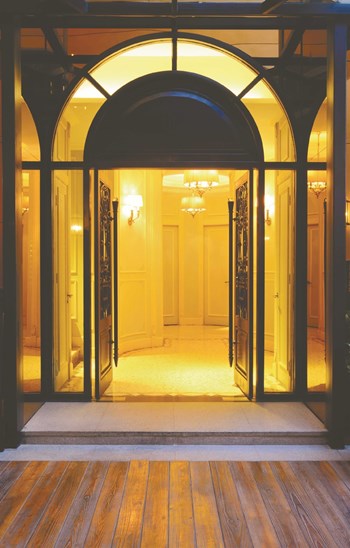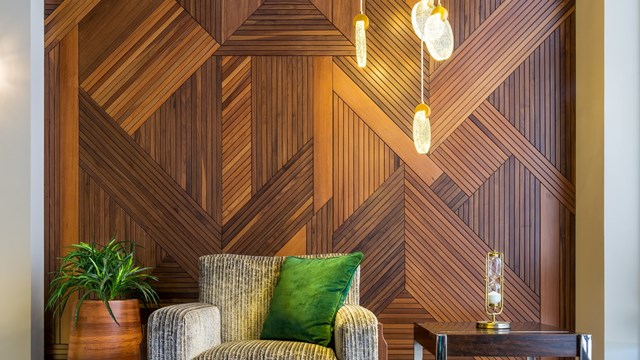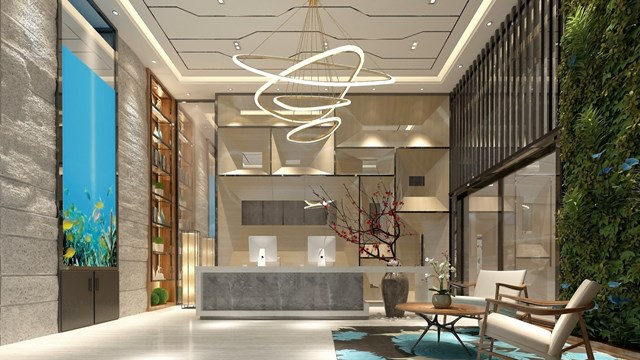
Call it the Ikea-fication of America. It seems that more and more people are getting interested in design, especially when it comes to their own home. In decades past, household furniture and decorations didn't vary a whole lot. Growing up in the twentieth century, odds are your friends' homes probably had a pretty similar couch and coffee table as your own. Thanks to new technology and an explosion of interest in retro styles, that has changed.
Let There Be Light
New construction methods for residential developments over the years have ushered in a new level of diversity in housing stock. There's the prewar single family home, the mid-century condo, and the newer steel-and-concrete buildings. Tastes vary more than ever, and interior designers are enjoying the array of projects. But design is not just furniture and hanging art. A huge component to the feel of a home is the lighting, and new technology on the market is changing the way our homes look and feel. The changes are also economic. Emerging technology will influence maintenance costs, energy bills and even how we interact with light on a daily basis.
For decades, the American market overwhelmingly depended on incandescent bulbs since electricity entered residential homes in the 1910s. Incandescent bulbs use a thin filament that heats up with an electrical current, and emits a very pleasant, warm yellow light. Despite their warm glow, they are very inefficient. Incandescent bulbs work at about five percent energy efficiency, and they burn out quickly. A high-voltage incandescent bulb will draw 100 watts of power. The 100-watt lamp usually works for about 500 hours.
Before the advent of newer technologies, most consumers considered wattage to be synonymous with brightness. A 60-watt bulb worked well for a reading lamp, and a 100-watt bulb was typically used for overhead area lighting. But in fact, wattage only signifies the amount of power being used to generate light. “As soon as we get accustomed to a bulb, it changes. There's always a new kid on the block that's better,” says Sheila Rich, owner of Sheila Rich Interiors in Monmouth Beach, New Jersey. When growing energy prices prompted more demand for efficiency, the easiest switch from incandescent was halogen. For the most part, halogen lights maintain a similar quality of warm light, and are considerably more efficient than incandescents.
Incandescents, Halogens, Fluorescents
For years the most reasonable alternative to the incandescent and halogen bulbs was fluorescent light. Everyone knows fluorescent light from offices, malls, and many other commercial spaces. “When you have a kitchen area let's say where there's one specified electrical place in the ceiling for a fixture, that is almost never adequate for lighting up a ceiling because usually kitchens in high rises are inside rooms. So you need some under-cabinet lighting, which LEDs and fluorescents are great for,” says Rich.
The harsh lighting of fluorescent lights, especially years ago, is why they never gained favor in residential homes, despite their much greater energy efficiency. Today, compact fluorescent bulbs, which work in a typical incandescent socket, are replacing incandescents on the residential market, due to the demand for greater efficiency and new federal laws, limiting the sale the incandescent bulbs. “Fluorescents are still the most cost-effective way to go short term and most buildings we find are hard pressed to bite the bullet and go for the expense of LED. The good news is that there is a pretty good range of color temperatures to choose from in fluorescent which is very helpful, but selecting lighting is one of the toughest parts of design,” says Marilyn Sygrove, the president of Sygrove Associates Design Group in Manhattan.
That LED technology stands for light-emitting diode. They're used for TV and computer monitor displays, and now they're increasingly being used as a household light source. Unlike its predecessors, LED uses an electronic process to generate light. LEDs still give off heat, just as computer processors do. But, they use far less energy. “If I'm going to use LEDs, I always use track lighting, because usually you can't use recessed lights in those apartments. But you can use tracks,” says Catherine Engelmeyer, owner of Belle Maison Interior Design in Short Hills, New Jersey. One 35-watt halogen lamp will get 5,000 to 10,000 hours average use before it burns out. “The bulbs are a lot more expensive but they also last forever. It's a combination of the two,” says Engelmeyer.
Light-Emitting Diodes
At first the novelty of LEDs and their easy maintenance made them more popular in outdoor situations, but the technology wasn't quite there yet for indoor lighting, he says. The increased use of LEDs indoors also has to do with new construction techniques. Newer condo buildings are built with steel support structures, and then concrete is poured in for the ceilings and floors. Concrete ceilings don't allow you to put in recessed lighting, and therefore don't allow for installers to wire an overhead fixture, so more new condo buildings had LED fixtures than other residential types. “In a steel-and-concrete structure, you're really pretty much stuck putting the lighting exactly where it is, because if you've got a cement ceiling you're not adding lighting. There's no way of drilling holes into the ceiling. That's why it's easier to add lighting to the walls because they're usually not concrete,” says Rich.
Designers and architects are enjoying the options, but they should be aware of the spate of new products. “The LEDs have a tendency to have a very white light, but I don't think we'll have a choice in the near future, so we have to get used to it, and if you can do a mixture of LEDS and regular, true bulbs, it will tend to give a warmth of light,” says Engelmeyer. Dimmers in living spaces and perimeter lighting can feel quite different than traditional overhead lights. They wash the walls, and the quality of light is much more indirect in the middle of the room, where people spend most of their time. Condo owners that opt for perimeter lighting also like the ability to change the lights with different settings, depending on how the room's being used at a given time.
LEDs are not just for the living room or kitchen. They're also being used more and more in common areas. Even though the upfront cost is more expensive than the alternatives, the nature of the technology offers more cost-savings than just a lower energy bill. “It's good, I'm assuming they're doing things that are going to help the environment,” says Rich. But if you use it a lot, like common areas, where lights might be on all day, the payback can be very fast. That's because LEDs tend to last between 25,000 and 50,000 hours on average, so they rarely need to be changed. For example, 50,000 hours would mean almost 6 years of luminosity if it was never turned off.
Ambiance at a Reasonable Price
Still, the market prices for LEDs will only go down as they become more popular, and more LED and CFL products use the same fixture as a traditional bulb.“There are screw-in down light fixtures that can take any screw in bulb; incandescent, fluorescent or LED. This is what we recommend over the others because of the flexibility, but there are still differences in the quality of light. Mostly, we are trying to emulate the warmth and softness of the incandescent bulb. Each project and each area requires careful consideration of how you want to paint the colors and textures with light. As time goes by, the use of LED bulbs will be perfected, but we are still in the early stages,” says Sygrove.
LEDs are changing everything when it comes to design, but form still follows function in many ways. One way designers have adapted from the growing lack of overhead lighting is with sconce lighting. “Much more contemporary, either on the high end, it's going to be crystal or some alabaster, or a lot of lamps in metal, either like a polished nickel or bronze. Brass is not as in as it used to be. A lot of contemporary, a lot track lights, LED, a lot of chandeliers,” says Engelmeyer.
Fixtures and sconce lighting are also an important consideration in common areas and lobbies, and with the huge spectrum of designs and styles, sometimes it's a hard decision to make. Be open to the suggestions that the experts will give you. Usually it's just to try a couple fixtures before you buy them. Don't just buy something off the Internet or what someone tells you looks nice. Experts recommend that before you go changing out all the lighting in the corridors or your living room, buy one first and try it out to test the color quality, how it dims and if you think it suits the room.
In lobbies and some common areas, LEDs show their current limitations. LEDs still do not show the same strength as the competitors at distances greater than 12 or 15 feet, so lobbies with higher ceilings may not have LEDs lighting them until that aspect of the technology improves, which might not take very long, given the rate of new products coming out almost every month. Designers and installers also have to be aware of safety concerns and guidelines that meet the Americans with Disabilities. There are simple things like ensuring lights are at a certain height, and everything is well lit.
A Matter of Taste
Design and decoration can be a matter of personal taste. Now, more than ever, tastes are diverse and many designers and lighting companies are aware of the newer technologies. Advancements in light technology also will lead the way to being more energy-efficient. Not only do LEDs lower your energy consumption, they're also affording new ways to light your home. With the pace of innovation getting faster and faster, it's hard to say what will be possible even five years from now.
Tom Lisi is an editorial assistant at The Cooperator and other publications.






Leave a Comment